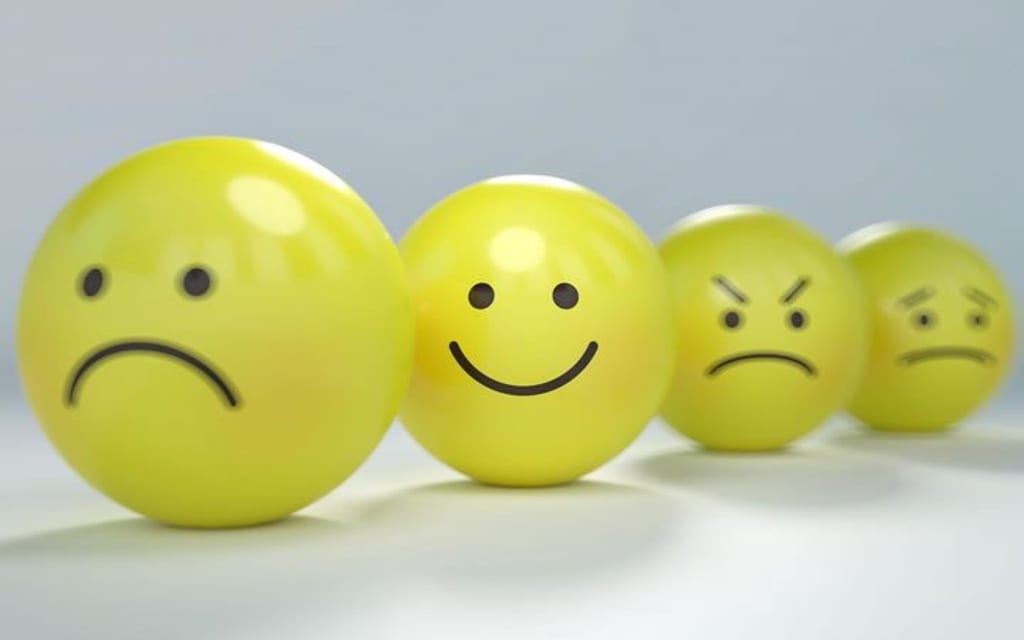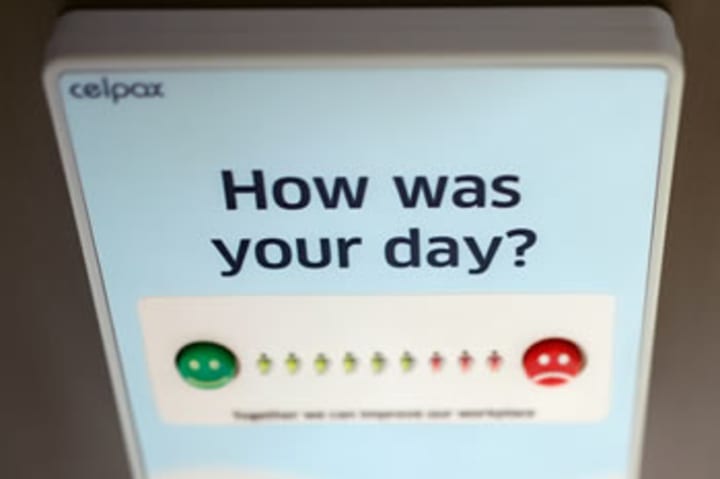Is it Really Possible to Measure Customer Loyalty?
Misinterpreting feedback for loyalty

Companies want to know what customers think of them. But is positive feedback a good measure of loyalty?
Requests for feedback on everything we do online has become a dreary consequence of doing everything online.
We see it constantly on websites from the moment we first arrive, asking for feedback when we haven’t yet looked around. Or post-support sessions such as Live Chat, where the managers rave feedback on how their operators are performing, seen as a little pop-up asking; “How well did I do?”, or similar.
On the surface, it appears to be a harmless request to help determine if you’re happy with the level of service or support you’ve received. What’s wrong with that?
The question is rarely asked in a balanced or neutral way. It’s frequently asked with a positive bias, much like the waiter who asks: “Was everything was ok with your meal?”, not “How was your meal?”
However, lurking beneath the surface of this seemingly innocuous query is a deeper, far stronger desire to find out how likely you are to buy from them again. Why? Because repeat customers are bankable and the figures look great on the monthly management reports.
The feedback is generically and inaccurately referred to as ‘loyalty’.

Why is the word ‘loyalty’ a misdirection?
The word ‘loyalty’ embodies multiple meanings and interpretations. For example; is the type of loyalty we experience from our canine friends the same as the loyalty supermarkets refer to or the loyalty seen on a battlefield?
The dictionary defines ‘loyal’ as:
“Giving or showing firm and constant support or allegiance to a person or institution.”
Loyalty is our natural tendency to show constant support which, in business, translates into customers coming back for more: more services; more products; more entertainment; more time — and all because they want to.
Of course, in reality, loyalty isn’t quite that simple.
They design loyalty schemes to bring in more business, but they can be expensive to devise, implement, market, and maintain. And, if the resulting uplift in revenue doesn’t cover the running costs, they may end the scheme. The point at which that happens is precisely when the company finds out how loyal its customers really are.

The birth of the loyalty scheme, as we know it today
In the UK, it wasn’t until Sainsbury’s introduced its Homebase Spend & Save scheme at the peak of the UK’s DIY frenzy in 1982, that the loyalty scheme concept captured the public’s imagination and satisfy their desire for ‘something for nothing’. Homebase was possibly the first company to use a plastic card the size of a credit card for this purpose, and it would have had enormous novelty factor back then, adding to its widespread adoption.
Simply take your shopping to the checkout, swipe your loyalty card, pay, and leave. Job done.
But there was (and still is) way more to the loyalty card scheme than they led us to believe.
Despite the warm and cuddly impression these companies give, explaining that the scheme is full of benefits for you to enjoy, it’s actually all a tad sinister.
These schemes take full advantage of technological trickery and data mining, in true big-brother style.
For the huge high street chain retail and superstores, loyalty schemes are the primary mechanism used to capture people’s personal data.

It’s all in the data
Supermarkets, in particular, know who you are, where you live who else is in your household, and where you shop. They also know precisely what you buy, when you buy it, and every detail about your personal food choice combinations, including the relationship between times and days you shop, and so-on.
The data is used to predict demand and shape the very products the shops sell. Each store knows what its customers are likely to want to buy.
Despite what you may believe, the range of products on supermarket shelves is anything but random.
Companies collect an immense amount of personal data (so-called ‘big data’) from millions of customers’ shopping habits. Introducing the GDPR in May 2018 was a palpitation-causing moment for many data managers, but the big players quickly cleaned up their act and continued, regardless.
The fact is, customer benefits are genuine and loyalty schemes continue to boost sales revenue, thus creating a band of truly loyal customers.
Or have they?

We all love something for nothing
In the right environment and where demand is high, a loyalty scheme can be highly effective at driving sales, even for small businesses. For example, in 2018 a long-established and highly successful fish & chip restaurant near Croydon, Surrey began running its own loyalty card scheme with spectacular results. A typical week saw them give away over 200 free meals, yet turnover and profits continued to rise because one free meal equates to 5 paid-for meals.
It is a win-win, but is that really loyalty, or is that just playing to our natural weakness for getting something for nothing (or even appearing to)?
The question is: if they stopped the scheme, would customers continue to go there, especially if they have to go out of their way to get to the restaurant? Maybe, maybe not, but the business is unlikely to want to find out. Once a loyalty scheme becomes successful, it effectively becomes a hostage to fortune too.
For over 30 years, every type of business from credit card companies to coffee shops to supermarket giants has been running a card-based loyalty scheme in one form or another, and they work well for those businesses with massive high street footfall, but what about the faceless companies in sectors such as insurance or finance, and all the independent online businesses? How can they measure loyalty without a physical card swiped or stamped, or a mobile app scanned?
Other loyalty schemes can be successful, such as the insurance comparison website Compare the Market. Their Meerkat Meals & Meerkat Movies rewards scheme is as close as it gets to paying customers, indirectly, for their loyalty.

Measuring loyalty on a scale of 1 to 10
In 2003, Fred Reichheld, Bain & Company, and Satmetrix gave birth to the Net Promoter System as a new and simple way to measure [mainly consumer] customer loyalty.
The system, which is primarily online, is said to: “…measure the loyalty that exists between a provider and a consumer” by asking one simple, key question of the consumer intending to elicit a score.
That question is:
“How likely is it that you would recommend our company/product/service to a friend or colleague?”
The consumer has to simply rate their answer by clicking a number on a scale of 1–10. That’s it.
Customers like it because it’s quick, simple, and requires no justification or explanation, and it’s 100% anonymous. At least it’s intended to be anonymous, but not every company exercises the restraint required to not ask for contact details.
Business owners like it because, according to Reichheld et al, a lot can be deduced from the number (or score) selected between 1 and 10.

How the scores are interpreted
Those who score in the range 1–6 are known as Detractors. They describe these as “unhappy customers who can damage your brand and impede growth through negative word-of-mouth.” In plain language; you’d better fear these people because they will actively bad-mouth your business and actively recommend not to use you.
Those who score 7 or 8 are known as Passives. They describe these as “satisfied, but unenthusiastic customers who are vulnerable to competitive offerings.” In plain language; these people are neutral and don’t care about your business. You made no noticeable impact on them, either negatively or positively.
Those who score 9 or 10 are Promoters. They describe these as “loyal enthusiasts who will keep buying and refer others, fuelling growth.” In plain language; these people are the Holy Grail. They will actively tell other people about their positive experience and recommend they use you too.
What’s really interesting is the assumption that there is a direct correlation between those who would recommend (or promote) the company/product/service (the 9s and 10s), and ‘loyalty’: those who would come back and buy again. It begs the question: is there really a direct correlation, or is this just hyperbole developed by Reichheld and his cronies to sell the concept to corporates?

The success of NPS
The Net Promoter System remains massively successful and is widely accepted as the de facto, global standard in measuring customer loyalty (as an interpretation of expressed customer satisfaction). Yet, despite this success, there are many critics of NPS based, primarily, around the complete lack of scientific evidence to support the claims that it is a clear and true representation of customer loyalty.
The response from NPS proponents is quite amusing. They say:
“…the practical benefits of the approach (short survey, simple concept to communicate) outweigh any statistical inferiority of the approach.”
It appears they agree that the so-called “facts” are, potentially, nonsense and open to both speculation and interpretation.
“Statistical inferiority”? Well, we all know what they say about statistics. Ok, for those who don’t know: we should use statistics the way a drunk uses a lamp-post: for support, not illumination.
Widely adopting the mythical belief that NPS is a true representation of customer loyalty is no less ridiculous than how we accept a small piece of paper printed with a currency symbol and a value as being money, and will gladly take it in return for the products, services or time we provide for others.
Neither actually exists. We just choose to believe they do.

At the push of a button.
An interesting development in creating an offline version of the Net Promoter System is push-button devices seen in bigger stores, at big public events/exhibitions, and huge transport hubs, such as airports.

These can be counter-top, tablet-style screens, or floor-standing podiums, each with a set of four or five physical buttons with symbols ranging from sad (red) to happy (green) that invite visitors to rate their experience with nothing more than a single push of a button.

Back to the original question
“Is it really possible to measure customer loyalty?”
In the same way that a company’s turnover is vanity (e.g. lots of stamped or swiped loyalty cards), and profit is sanity (e.g. identifiable, confirmed returning customers), the short answer is: no.
Of course, with eCommerce, “identifiable, confirmed returning customers” is easy to quantify because most online sales require the customer to create or log-in to an account. Returning customers are therefore easy to identify and might be seen as demonstrating loyalty. So the answer is most likely: yes.

Blind faith
NPS is simple and cost-effective to implement. It’s also way more likely to be used by your customers than any other system or survey you can devise. As long as you, the business owner, buy-in to the concept of interpreting the results in the same way every other NPS adopter has: that customers selecting a score from 1–10 (or button from sad to happy) are actively demonstrating their level of loyalty to your business, product, service. This way, NPS is an effective feedback mechanism that could transform your business, should you choose to act on the results.

What can you do to measure customer loyalty in your business?
Think about your own business and the way you or your business transacts with customers, and the experience they have when doing so.
How important it is for you to know how satisfied your customers were with their last experience, and whether or not they would recommend you to someone else?
It should be vitally important to you, and you should want to know. Why? Because a recommendation not only builds credibility and brand value, but the resulting customer is free — they cost you nothing to acquire. Ask anyone who has high customer acquisition costs and you’ll appreciate how valuable free customers are.
Using NPS, or your own version of it, wouldn’t be a bad way to begin measuring the reactions of your customers, but I would advise taking a somewhat philosophical view of what the results are telling you, rather than blindly choosing to believe the positive responses accurately represent how loyal your customers will be to you.

Originally published on clivewilson.com
About the Creator
Clive Wilson
I write with an inquiring mind about marketing, business and what life can teach us about life, and I take very little at face value.
You can find more about me at www.clivewilson.com






Comments
There are no comments for this story
Be the first to respond and start the conversation.